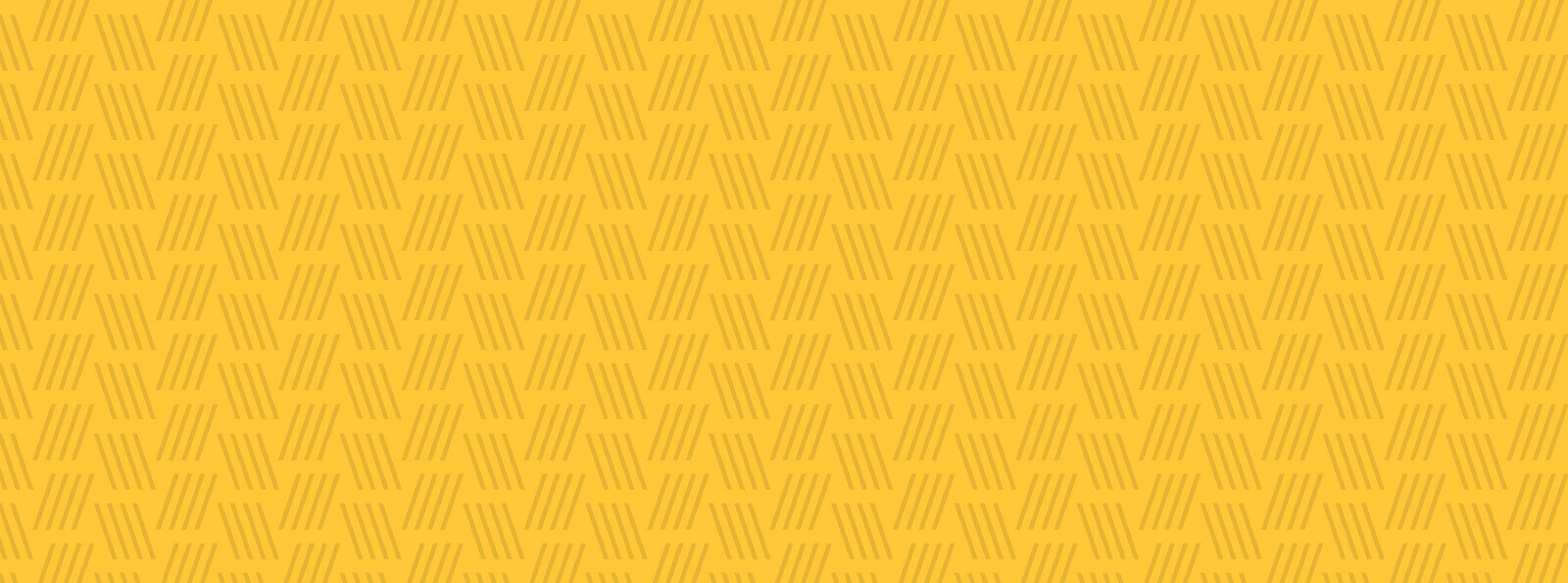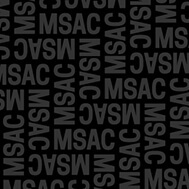About the Artist
Lauren Frances Adams mines the histories of power, labor, and material culture to make surprising connections that resonate with current sociopolitical issues. She is an MFA graduate of Carnegie Mellon University, and lives and works in Baltimore, Maryland, where she is a full-time faculty member in painting at the Maryland Institute College of Art. She has had recent solo exhibitions at Back Lane West, Cornwall, UK; Contemporary Art Museum St. Louis; EXPO Chicago; Conner Contemporary, Washington, D.C. and Royal NoneSuch Gallery, Oakland, California. Recently on view in Washington, D.C., American Catastrophe Report is a site-specific installation at American University through 2015. Her work has been featured in group exhibitions including: The Walters Art Museum in Baltimore, MD; Contemporary Applied Arts in London; Southeastern Center for Contemporary Art, Winston-Salem, North Carolina; CUE Foundation, New York; Mattress Factory and the Andy Warhol Museum, Pittsburgh, PA; among many others. She has been awarded Cité Internationale des Arts in Paris residency, Skowhegan School of Painting and Sculpture residency, and she is a Joan Mitchell Foundation MFA Grant recipient. Adams is the co-founder of Ortega y Gasset Projects, a gallery and long-distance artist collective in New York. http://www.lfadams.comArtist's Statement
At the core of my work are critical explorations of labor and class in visual culture. I draw heavily upon the historical decorative arts to find contradictions within the contexts they originated. In my work, objects such as wallpaper patterns, ceramics, textiles and paintings do not simply reflect the mood of a given culture but are also tools for critique. Alongside painting and mixed-media installations, I use domestic materials in my research on the construction of political identity. These ubiquitous yet formative objects are of great interest to me—particularly repetitive patterns, which I utilize as both surface background noise and as a site for visualizing crisis and conflict. In these patterns, I alter and manipulate both the images they depict and the notions of authoritative taste they promote. Previous works, such as the Domestic Disturbances series, pictured French toile as the vehicle for social and political commentary while visualizing the military industrial complex post-9/11. Chinoiserie (Labor Protest Histories) features vintage wallpaper with hand-painted interventions of early 20th c. textile workers striking. We the People at the EXPO Chicago art fair solo booth in 2012 was an interactive project where I invited the public to hand-paint their own protest slogans, displayed amongst a patterned variety of other slogans from both Occupy Wall Street and Tea Party political protests. The Lost Colony Project relates to the Elizabethan age of exploration and the colonization of the New World. My aim is to alter contradictions into uneasy reconciliations. I employ visual humor as a form of resistance. Strategies of appropriation and historic archival research are at the core of my practice. I am particularly drawn to representations that explore social and political struggles. My work has been said to ‘use culture against itself,’ highlighting the exhaustion of grand narratives in the contemporary global context.Featured Work
Photos
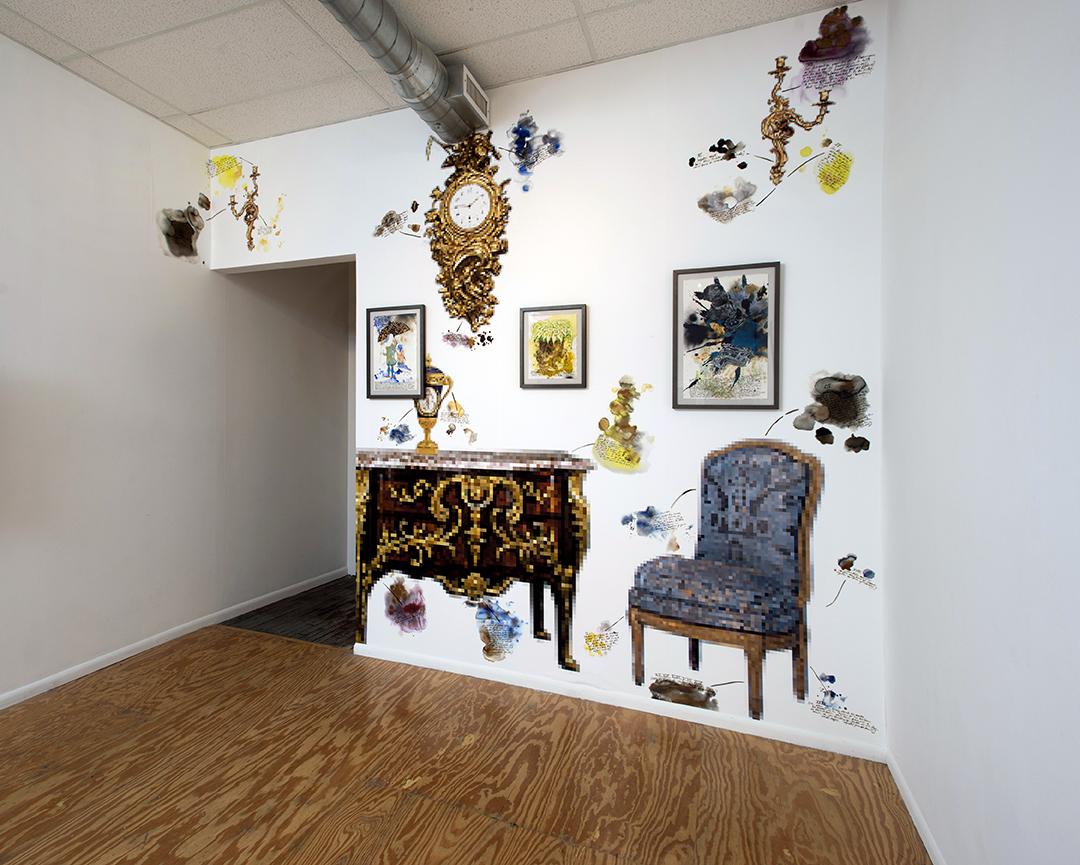
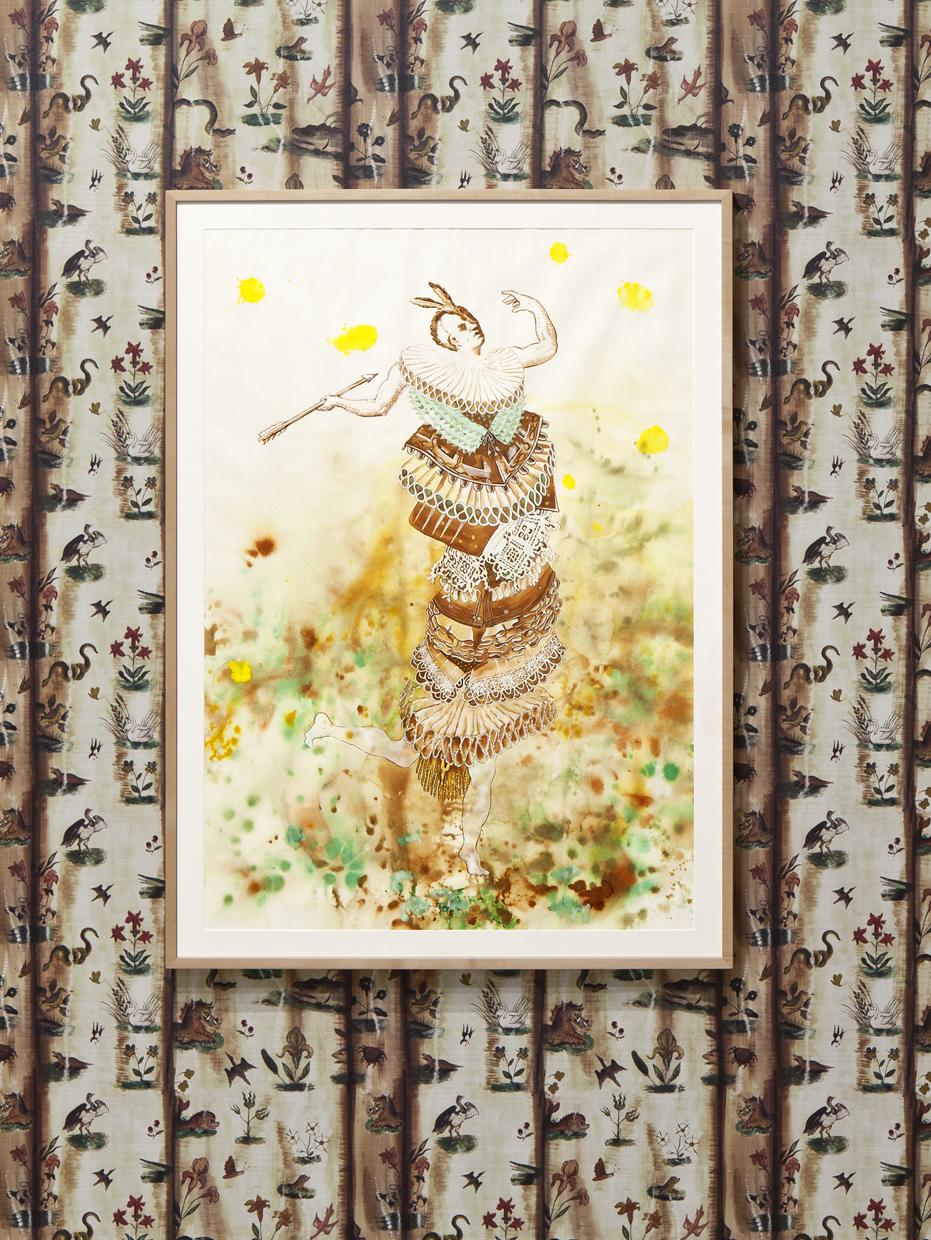
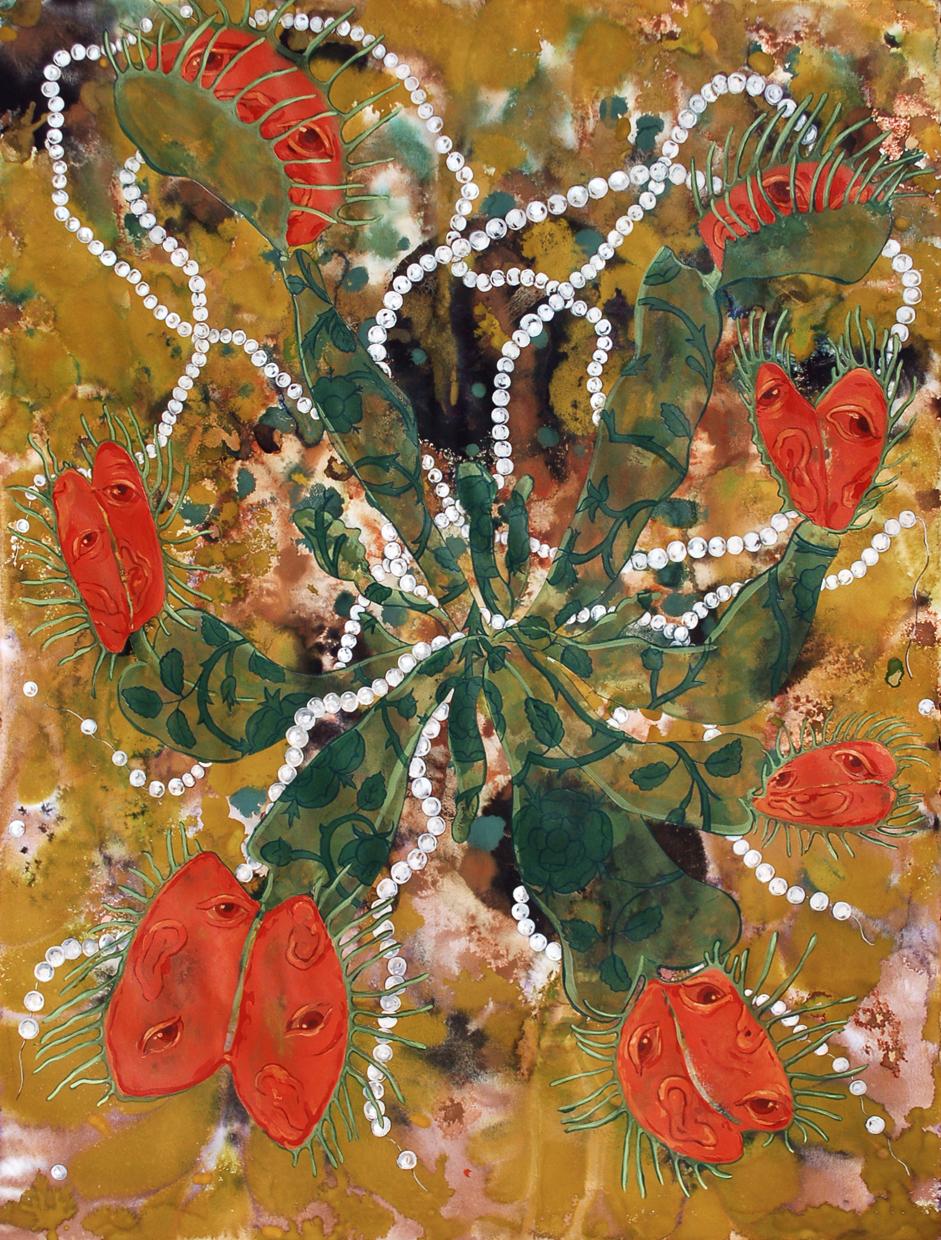
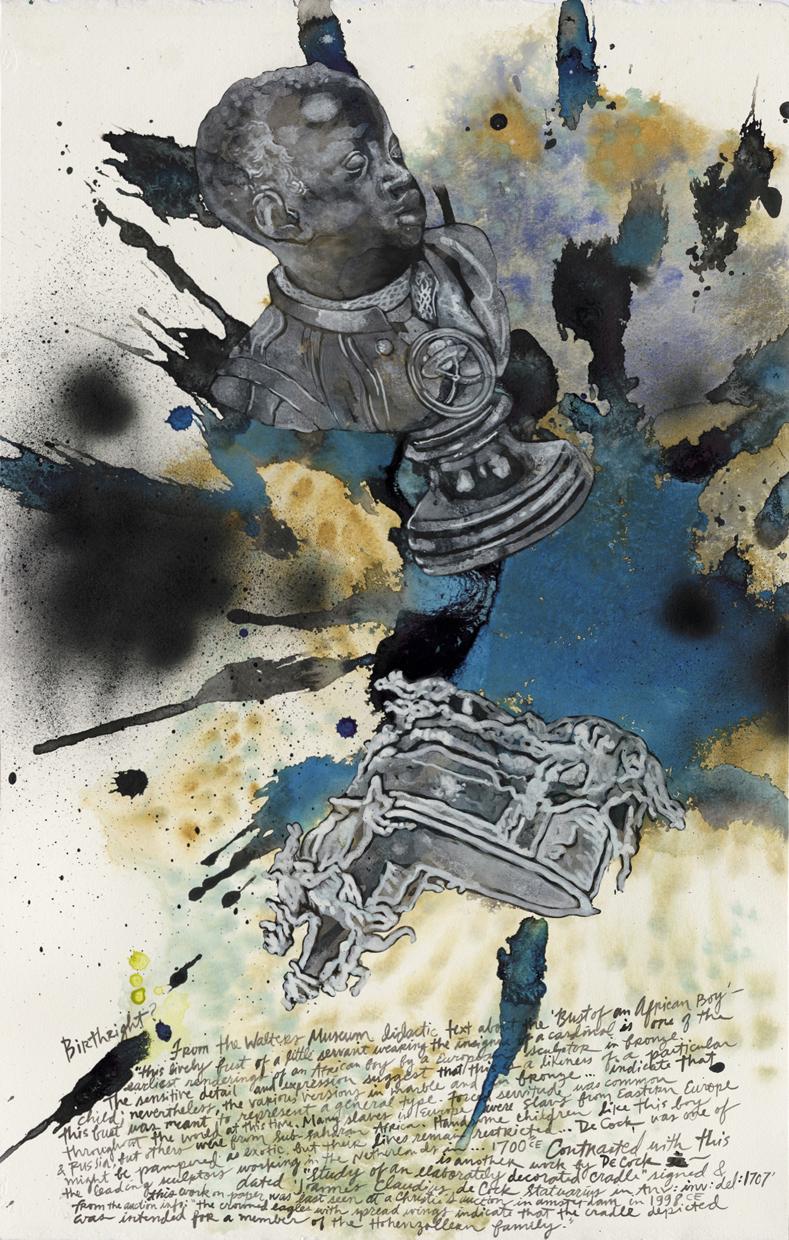
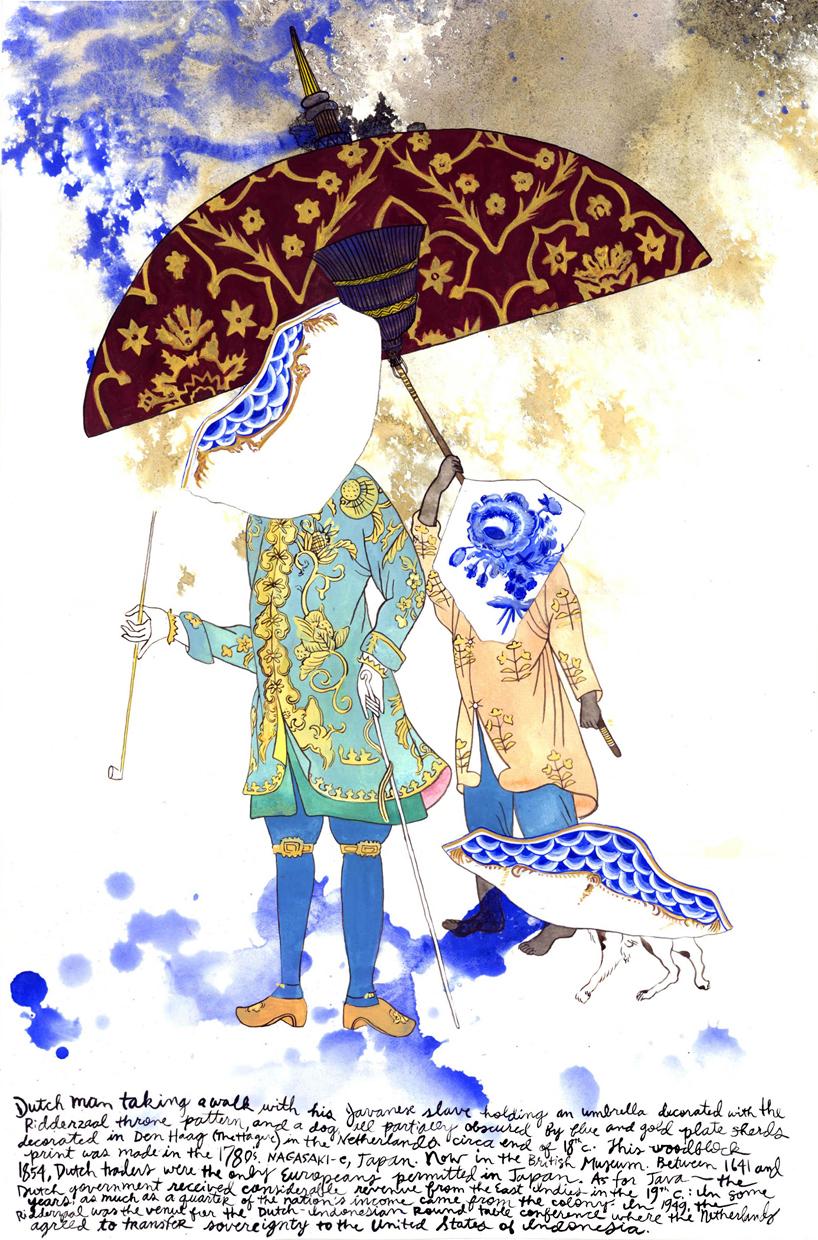
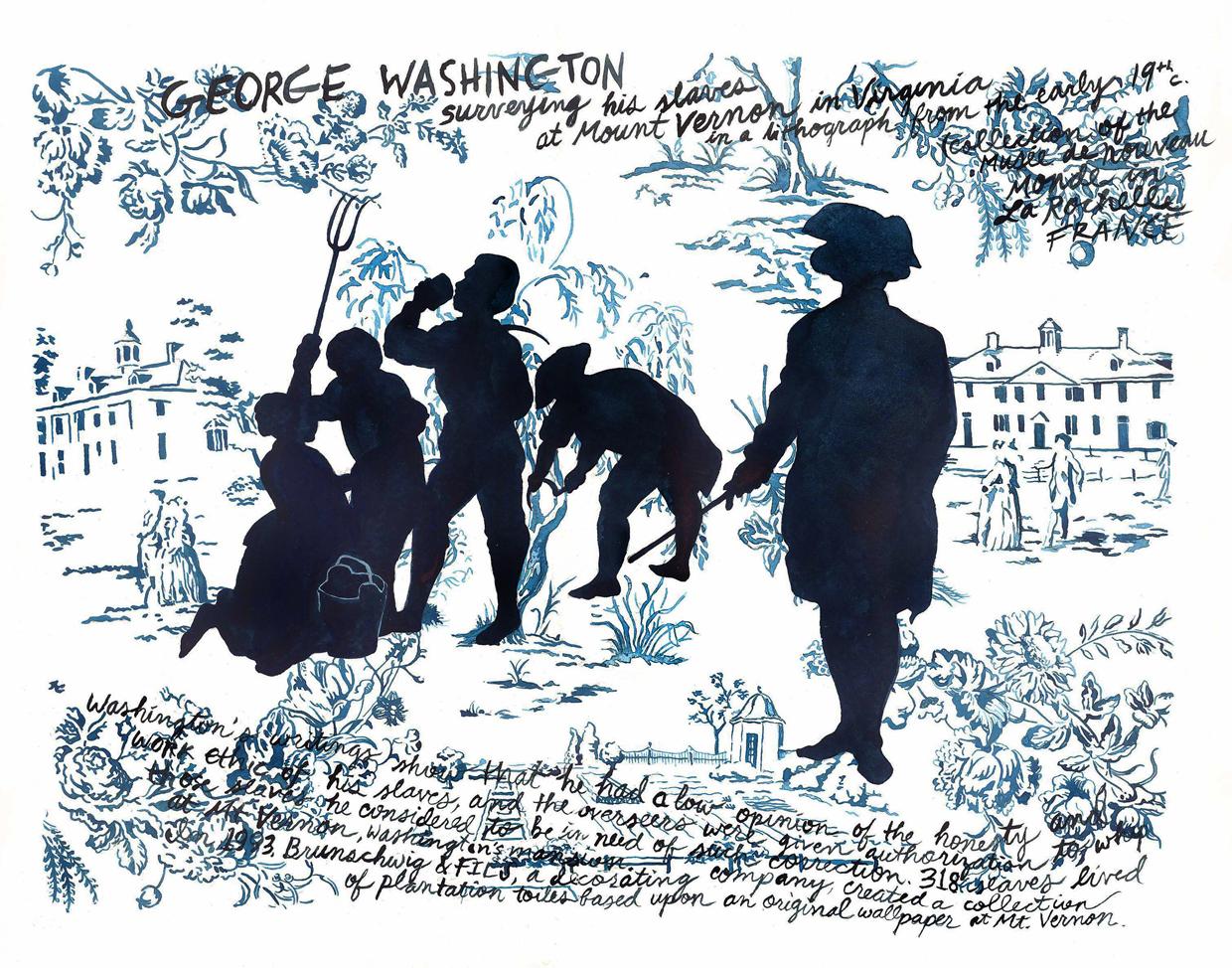
Featured Work: Photos
Anatomy of Style (Code Noir)
Digitally printed vinyl wallpaper, 3 framed paintings
2016
New France was the name of the territory stretching from New Orleans and the Gulf of Mexico up the Mississippi River (including parts of Kansas and Missouri) to Canada during the French colonial period (16th-18th centuries). Louis XV was the king of France during this later period, and in 1724 at the age of 13, he signed into effect the second version of the Code Noir. This ‘black code’ consolidated the French legal framework concerning slavery in North America, restricting the rights of enslaved and free blacks and outlining the religious entitlements of all French subjects. The painted texts in the wallpaper are from this regulatory decree. The pixelated objects depicted in the wallpaper are from the Nelson-Atkins Museum collection of Louis XV style furniture, objects created in a style once popular in France and roughly concurrent with this later era of French trade and settlement in Illinois Country / Upper Louisiana. Collapsing ornament and oppression, the Code Noir textual extracts combined with archival evidence of the monarchy’s finest furnishings offer an acute contrast concerning an important period in the history of Missouri, and in the United States.
Positioned on the background image and hanging as if slightly askew in a genuine and grand domestic space are three paintings from my ongoing series, Decorum. Decorum is an incomplete but growing index of the histories of enslaved people from antiquity to the present. Decorative and textual sources trace the complex structures that surround labor and power inequalities. My sources are frequently found in museum collections, where the museum acts as both witness and author. Archival remnants of slave narratives, ornament, and my own personal inquiries constitute an open-ended process of asking how the decorative arts participate, either actively or silently, in promoting or reflecting dominant ideologies of social hierarchy, political authority, and cultural fantasy.
Hoard
gouache and acrylic on paper
2012
Lost colony project
Venus Fly Trap
gouache and acrylic on paper
2013
from the Lost Colony Project
Decorum #32
gouache and acrylic on paper
2014
Series of 40 paintings 2014-2016
Decorum #19
gouache and acrylic on paper
2015
Series of 40 paintings 2014 - 2016
Decorum #20
gouache and acrylic on paper
2014
Series of 40 paintings created 2014 - 1016
